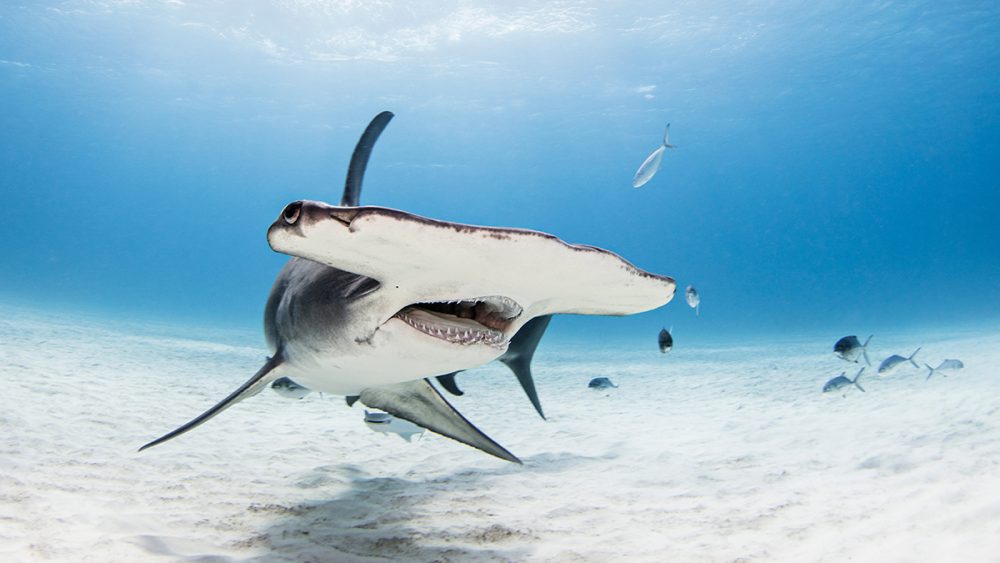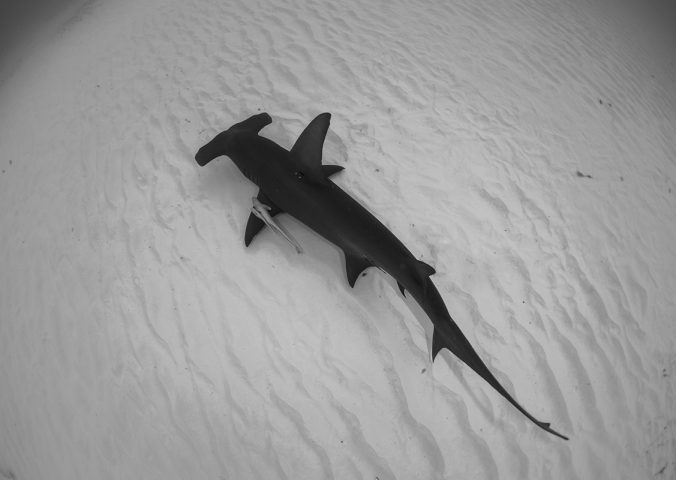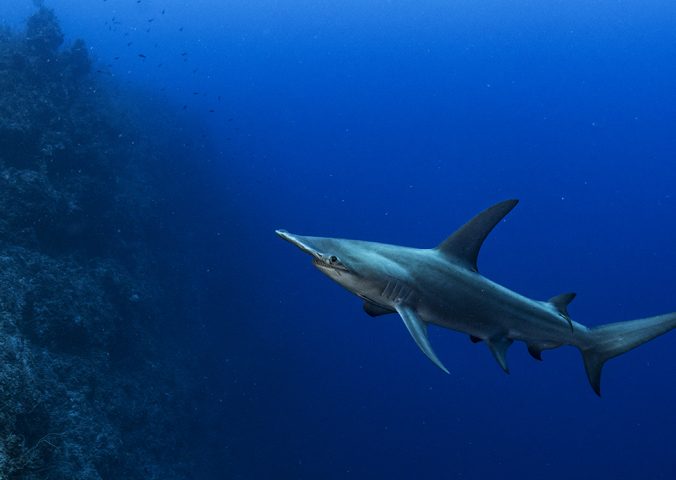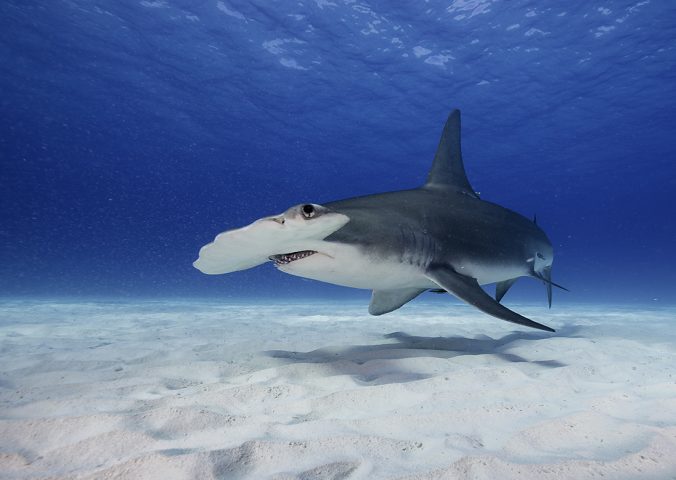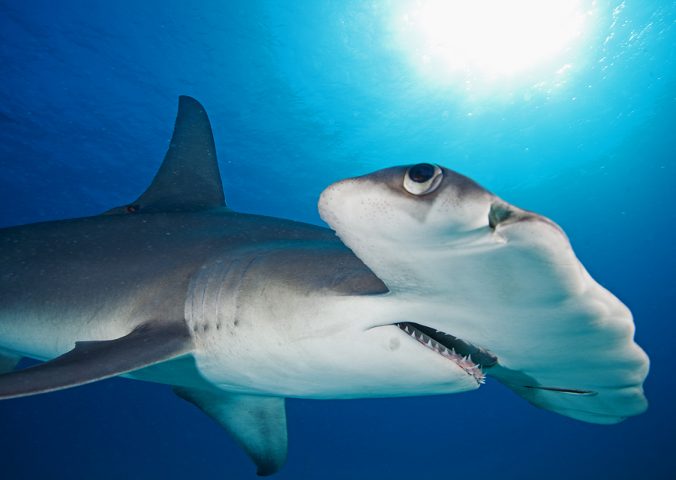About
The iconic great hammerhead is the largest of 8 species of hammerhead sharks from the genus Sphyrna, reaching up to 6m. It is one of the most threatened species of hammerheads due to the high value of its large dorsal fin.
This species is a solitary predator. They are aplacental viviparous species, supplying their embryos with nutrients from the yolk. The females remain pregnant for 11 months before giving birth to between 6 and 42 live young, only having litters every two years.
The major threat to this species is overfishing. Great hammerheads are prized for their large fins and are often targeted for the Asian shark fin market and by recreational sports fishers. Great hammerheads are also caught accidentally in longlines, fixed bottom nets and bottom trawls, although such catches are typically only reported to the genus level (Sphyrna species). They are particularly vulnerable to overexploitation as they only reproduce once every two years. Other threats include anti-shark measures around the beaches of Australia and South Africa.
- Order: Carcharhiniformes
- Family: Sphyrnidae
- Population: Unknown
- Trend: decreasing
- Size: Up to 6m (?)
- Depth Range (m): Up to 300m
EDGE Score
Distribution
The great hammerhead shark is regarded as a solitary species, and although widely distributed throughout tropical and warm temperate waters, it is unlikely to be abundant in any given area.
Habitat and Ecology
The great hammerhead shark is a predominantly coastal species often encountered over continental shelves. It migrates towards the poles in warmer months and to the equator in cooler months, predominantly feeding on fish and stingrays. Great hammerheads aren’t daunted by the venomous tail spines of stingrays as they are often found in the shark’s mouth. One shark had 50 spines embedded in its mouth and throat!
